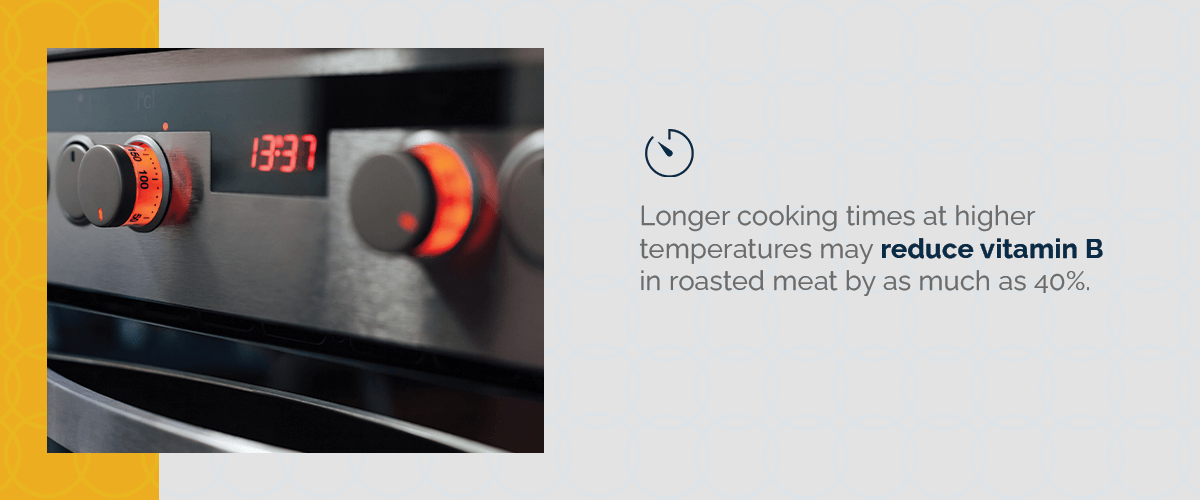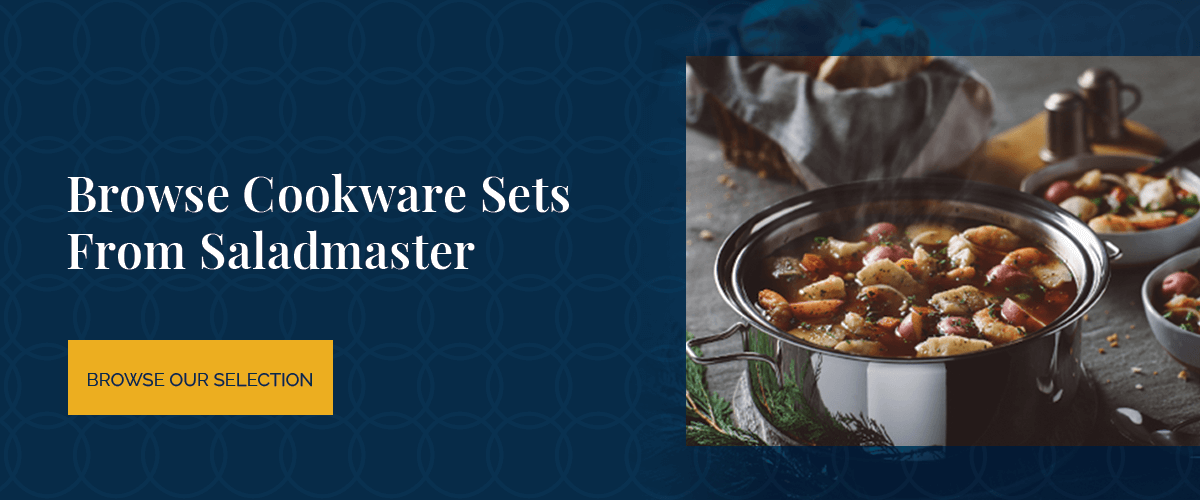How Cooking Affects the Nutritional Value of Food
While eating nutritious foods such as vegetables or protein-rich meat can be a great way to maintain a healthy diet, it's equally important to consider how you cook them. When planning healthier meals, you need to understand how cooking affects the nutrient content of foods.
Certain cooking methods can help preserve essential vitamins, minerals and nutrients and reduce fat and oil, making your dishes considerably more nutritious. Meanwhile, other cooking techniques can increase the fat, calorie and salt content in foods, so you may want to minimize these methods if you're trying to maintain a healthier diet. This article explains how cooking methods impact the nutritional value of foods.
Gaining Nutrition Through Cooking
If you're looking to gain nutrition through cooking, there are various practices you can implement in the kitchen. Before determining healthy cooking techniques, you'll first want to think about nutritious foods to add to your diet. Here are some healthy foods you might consider cooking with:
- Eggs: Eggs are high in protein and free of carbs and sugar.
- Broccoli: Broccoli is an excellent source of fiber, protein and vitamins C and K.
- Sardines: Sardines are packed with essential nutrients. They're an excellent source of vitamin B12 and calcium.
- Sweet potatoes: Sweet potatoes are rich in antioxidants, vitamins B and C, beta-carotene and other nutrients.
- Cauliflower: Cauliflower is high in fiber and vitamin B. It's an excellent substitute for carb-heavy ingredients and starches like rice and potatoes.
You can work the above foods into your diet by seeking healthy, immune-boosting recipes involving these ingredients. Here are some additional ways to gain nutrition through cooking:
- Cook with quality, natural ingredients from a farmer's market, garden or local grocery store.
- Stick to whole-wheat pasta, bread and tortillas.
- Use culinary herbs to replace salt and oil.
- Invest in high-quality cookware.
To gain nutritional benefits through cooking, it's also important to select an effective cooking method that preserves vitamins, minerals and other nutrients. Later on, we'll discuss some different cooking methods and which ones are most effective at sealing in these essential nutrients.
Losing Nutrition Through Cooking
It's also important to be aware of ways you can lose nutrition while cooking. Here are some of these mistakes to avoid in the kitchen:
- Using unhealthy cooking methods such as frying or microwaving
- Using ineffective and poor-quality cookware
- Grilling meat for long periods
- Cooking with large amounts of salt, butter, fat and oil
- Overcooking your vegetables
Cooking Techniques
Cooking methods affect nutrients in foods in different ways. Let's look at some of these techniques and how they can impact nutritional value.
1. Baking and Roasting
With baking and roasting, food is cooked in an oven using dry heat or cooked with Saladmaster cookware on the stove. Most vitamin losses, particularly vitamin C, tend to be minimal with these processes, making them relatively healthier than other methods. However, longer cooking times at higher temperatures may reduce vitamins in roasted meat by as much as 20%.
In meat, losses are approximately 20% of all the vitamins for roasting

2. Boiling
Like simmering and steaming, boiling involves cooking food with water. However, boiling completely submerges food in water and uses the highest cooking temperature of the three methods. Vitamin A and other minerals may be lost during this process but not to a large extent. Fat-soluble vitamins such as D, E and K remain mostly unaffected during boiling.
3. Broiling
Broiling is a cooking method that exposes food to direct heat from above, so it's essentially upside-down grilling. Broiling requires little to no oil, which can reduce calories in your dish and serve as a relatively healthier cooking method. This process reduces saturated fat in red meat, making broiling better for your arteries.
4. Frying
Frying is the process of cooking foods in hot oils or fats. The standard frying techniques are sautéing, pan-frying, stir-frying, shallow-frying and deep-frying. Overall, frying isn't the healthiest cooking method because it significantly increases fat, salt and calorie content. Stir-frying tends to be the healthiest frying technique of the five, while deep frying is easily the least nutritious.
5. Grilling
Grilling is similar to broiling in that it cooks food with dry direct heat. However, the major difference between the two is that grilling uses heat from below while broiling uses heat from above. Grilling can be a way to lock in vitamins, minerals and moisture, keeping foods juicy and tender without the extra fats. However, grilling may reduce vitamin B as nutrient-rich juices drip from meat.
6. Microwaving
Microwaving may be a quick and easy way to cook food with electromagnetic radiation, but it's ineffective at locking in those essential vitamins and minerals — particularly with vegetables. Because vitamins and minerals are sensitive to heat, it's best to avoid cooking veggies in a microwave oven. This appliance can cook anywhere from 400 to 1,200 degrees Fahrenheit, decreasing your meal's nutritional value considerably. For these reasons, boiling and steaming are considered ineffective cooking methods as well.
7. Steaming
Like boiling, steaming is a form of water-based cooking. However, the main difference between the two is that boiling completely submerges food in the water, while steaming involves lifting the food over boiling water.
Similar to microwaving and boiling, steaming is considered another ineffective form of cooking, especially for vegetables. With broccoli, for instance, steaming significantly reduces the essential nutrients in these sprouts — potassium, folate and vitamins. Additionally, steaming carrots decreases their carotenoid levels and Vitamin A concentration.
Best Way to Preserve Nutrients
As mentioned above, cooking methods can impact the nutrients you preserve in your foods. In addition to the cooking technique you use, it's important to invest in high-quality cookware that can retain these nutrients.
Thankfully, we've discovered an excellent way to achieve this at Saladmaster. Our advanced cookware uses an easy waterless cooking method that eliminates the need to add water or oil. Its semi-vacuum cooking method allows your food to retain up to 93% of optimal nutrients and vitamins while protecting its natural flavors.
Browse Cookware Sets From Saladmaster
At Saladmaster, we offer a range of premium cookware sets, each one carefully constructed to accommodate a variety of cooking surfaces and ovens. Our cookware also cooks foods faster and more efficiently, makes pouring easier and mess-free and reduces fat content while maintaining optimal flavors.
With over 75 years of experience in the cookware industry and outstanding customer service, our experienced team of Saladmaster dealers can help find the right cookware for you. Browse our selection of cookware sets, or contact us with questions!

29452